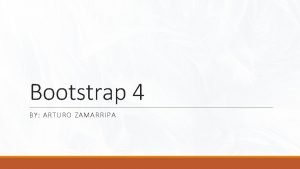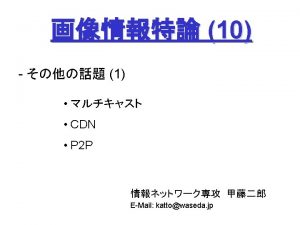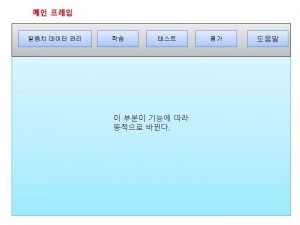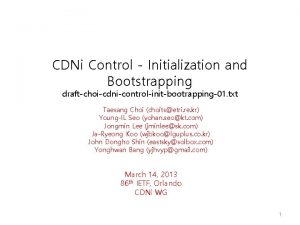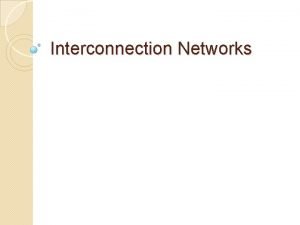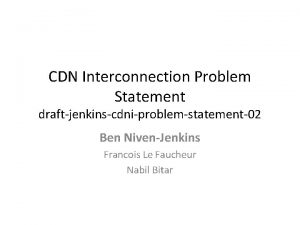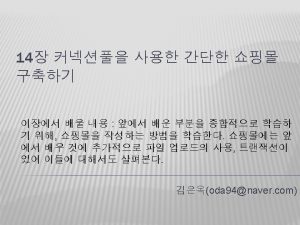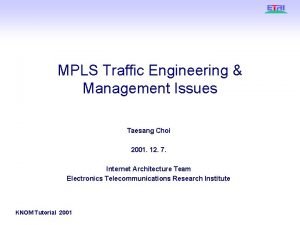Request Interface for CDN Interconnection draftchoicdnireqintf00 txt Taesang











- Slides: 11

Request Interface for CDN Interconnection draft-choi-cdni-req-intf-00. txt Taesang Choi (choits@etri. re. kr) Jonggyu Sung (jonggyu. sung@kt. com) Jongmin Lee (jminlee@sk. com) Ja-Ryeong Koo (wjbkoo@lguplus. co. kr) John Dongho Shin (eastsky@solbox. com) Yonghwan Bang (yhlvyp@gmail. com) July 30, 2013 87 th IETF, Berlin CDNi WG 1

Introduction • Related Requirements: the CDNI – Request-Routing architecture shall support iterative CDNi request routing – need to implement an access control mechanism that enforces the CSP’s distribution policy – need to support high availability and response time – One common characteristic is that they all require interactions between an end-user and a CDN provider • To – – meet such requirements, this document defines a new interface, “Request Interface” describes information elements and transport protocol describes request interface procedures provides some examples 2

Request Interface • Supports request iterative routing redirection with loop prevention • Supports URI signing • Supports multi-location returns for high service availability and response time 3

Request Interface Information Elements • “CDN-Provider-ID” for redirection loop prevention – "CDN provider Name" + "Max. Num. Red. Hops" – The CDN provider Name • AS number + an additional qualifier – Example: http: //cdn. csp. com? CDNI-CID 0=100: 0 & CDNI-CID 1=200: 1 & CDNICID 2=300: 0 & Max. Num. Red. Hops=8 • Multi-location Return for service availability – HTTP/2. 0 302 – Location: http: //www. example. com/sample. zip – M-Location: http: //www. example. com/sample. zip http: //www 2. example. com/sample. zip http: //www 3. example. com/sample. zip – M-Redirection-Count: 0 4

Request Interface Procedure: Iterative request routing redirection with loop prevention

Request Interface Procedure: Iterative request routing redirection with loop prevention

Request Interface Procedure: Iterative request routing redirection with multi-location return

Request Interface Procedure: Iterative request routing redirection with multi-location return

Request Interface Procedure: URI signing

Summary • This draft proposed – Bringing the interface, “Request Interface” (between an end-user and a CDN provider) within the scope of the CDNi WG – Information elements for the Request Interface – Three request procedures: iterative request routing with loop prevention, iterative request routing with multi-location return, and URI signing 10

Next Step • Two possible ways to proceed “Request Interface” work – Method 1: Create a new draft “Request Interface” and specify all procedures and mechanisms related with it (the current proposal) – Method 2: Keep the existing work as they are and add request interface related sections (e. g. , add request interface section in the URI signing draft). – If Method 2 is preferred, my proposal is to change this draft into “Request Routing Redirection Loop Prevention” which focuses on the loop prevention function itself rather than request interface and add request interface related section instead as in URI signing • For multi-location return issue – Requirement for CDNi service availability needs WG agreement. Currently there is no requirement associated with it – If requirement can be justified and agreed by the WG, separate work or any interfaces related with it can enhance the required functionality 11






